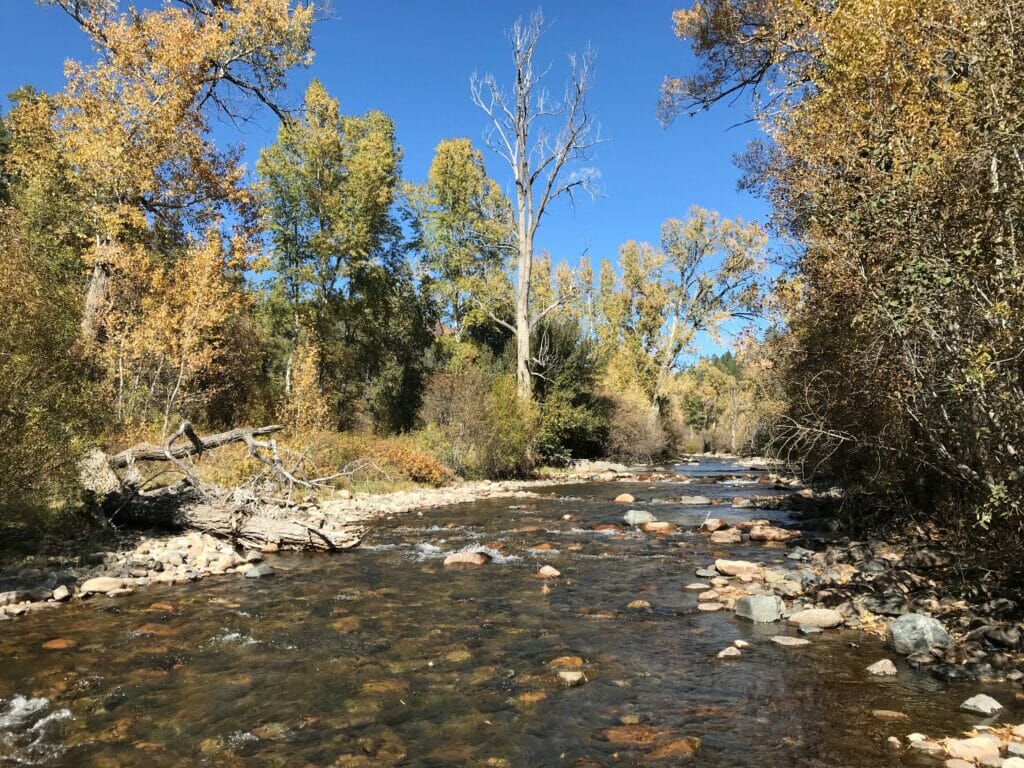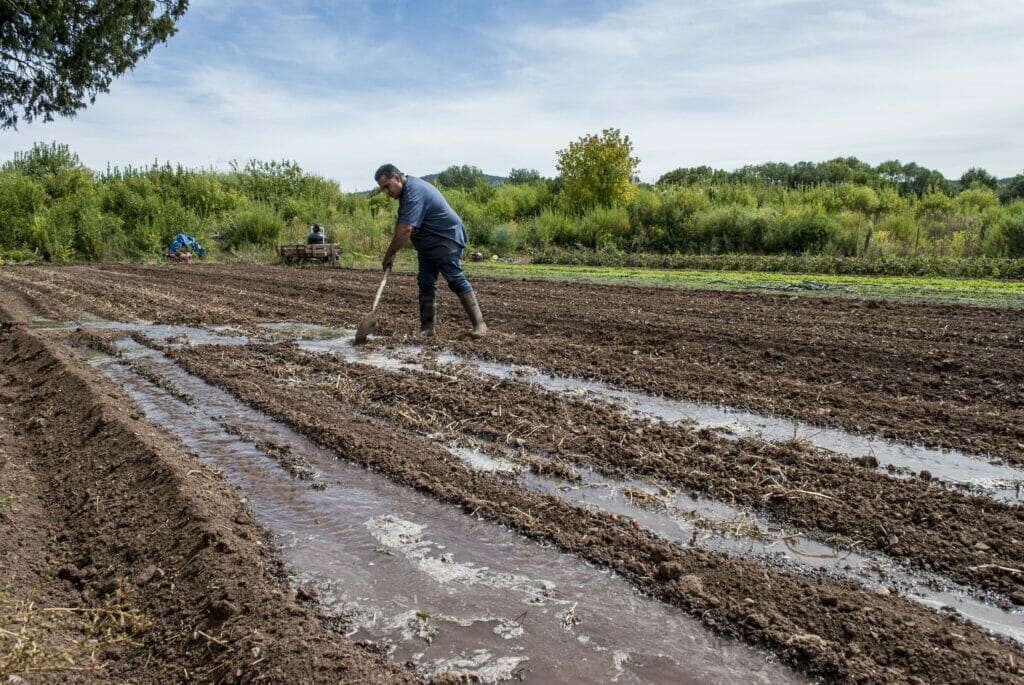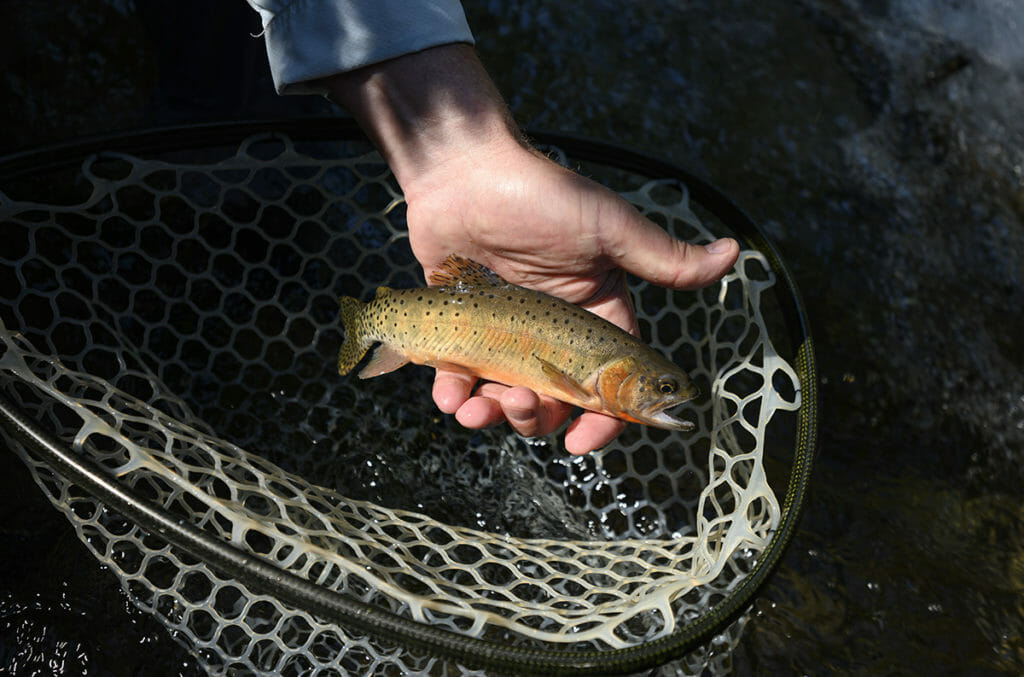The Pecos River, its tributaries and surrounding wilderness area, is where much of northern New Mexico comes to fish. In fact, many of us learned how to fish on the Pecos.
The variety of fishing options in the Pecos watershed is almost limitless: fly or lure, small creeks to larger streams, wild brown and rainbow and native cutthroat trout. As a recreational asset, the watershed is staggering in its importance to the regional tourism economy, either by itself or as a complement to activities like rafting, mountain biking, the Spanish and Indian Markets, the Balloon Fiesta, and the Santa Fe Opera. The Pecos River literally fills restaurants and books hotels. It sells not only camping gear and fishing tackle, but real estate as well.
Of particular interest to Trout Unlimited, not to mention thousands of New Mexico anglers, is the watershed’s importance to the restoration of our state fish, the Rio Grande cutthroat trout. Climate change is impacting water temperatures and seasonal fire regimes, elevating the urgency of establishing cutthroat populations in as many streams as possible, ideally in a network of protected surface waters within ecologically-resilient
The company intends to explore for copper, zinc and gold by digging exploratory wells as deep as 4,000 feet. The Forest Service approved use of a nearby water well for exploratory drilling, which could require nearly a million gallons.
As successful as New Mexico has been in its cutthroat restoration efforts, the state has a long way to go before the Pecos strain of the Rio Grande subspecies is out of peril. While two Pecos strain projects are currently in the works on tributaries to the upper Pecos, critical cutthroat restoration has yet to be completed on major tributaries like Mora Creek and Panchuela Creek that offer many miles of future cutthroat habitat. Until these projects are implemented, the Pecos strain will likely lack the redundancy to withstand future environmental shifts promised by climate change. Any additional threats to the watershed, be it from hardrock mining or catastrophic fire, will underscore these restoration efforts.
Like many watersheds across the west, the upper Pecos is still recovering from a legacy of pollution left behind from mining activities that occurred a century ago. Despite some setbacks, like a major fish kill caused by mine tailing run-off in the 90s, the river is on the verge of recovery. At least we hope. In 2019 news surfaced that the Comexico LLC, the American subsidiary of an Australian mining company, had purchased old mining claims along the river and staked additional claims on thousands of acres of U.S. Forest Service lands in the watershed, including roadless areas and historic trout habitat. The company intends to explore for copper, zinc and gold by digging exploratory wells as deep as 4,000 feet. The Forest Service approved use of a nearby water well for exploratory drilling, which could require nearly a million gallons.

The public response to the mining proposal was swift and nearly unanimous in opposition. Local stakeholders expressed they had no interest in returning to the mining days of old—the economy they envision for the future is one driven by agriculture, outdoor recreation and tourism, and they have the geography and natural amenities to thrive under such a scenario. New Mexico’s governor and members of the Congressional delegation spoke out in opposition to the mining plans. The president of TU’s local chapter penned a letter to the editor of a regional newspaper making it clear that new mining operations were likely to harm angling opportunities, trout conservation and the local fishing economy.
In the two years since those mining plans surfaced, new and locally driven conservation initiatives have emerged to protect the waters of the upper Pecos. New Mexico Sens. Heinrich and Lujan have introduced the Pecos Watershed Protection Act, federal legislation to prevent future mineral leasing in the uppermost portion of the watershed. While this won’t prevent mining from occurring on existing claims, its passage would ensure that no future mining claims are staked in the area. Meanwhile, a group of stakeholders that includes two local governments, a downstream organic farm, and two non-profits with missions of protecting clean water has petitioned the state of New Mexico to expand water quality protections for the river and some and its tributaries.
While the outlook for future protection is promising, the fate of the watershed remains uncertain, exemplified by the Pecos’s inclusion on the American River’s 2021 list of the country’s most imperiled rivers, due largely to the potential impacts of new hardrock mining. Clean water, the future of a unique strain of a cherished native trout, and the livelihoods of those who make a living tending fields downstream or guiding anglers along the banks of the river are all at risk, according to the American Rivers report.
In the interest of durable cutthroat trout restoration—and to preserve the watershed’s value as an agricultural and recreational resource—it makes ample sense to protect the water quality throughout the upper Pecos basin. The economic reasons for this are obvious. Business transactions related to the watershed account for significant jobs, wages and tax revenues in Santa Fe and San Miguel counties and beyond. The Pecos River also provides drinking water to villages such as Pecos, San Ysidro, and Villanueva. These communities harbor several small businesses that provide services to the broad array of recreation taking place in the Pecos Canyon. And in light of consumers’ growing preference for healthy, contaminant-free foods, demand for Pecos Valley agricultural crops—grown with cold and clean Pecos River water—is on the rise throughout northern New Mexico.

The proposal to reopen mining in the upper Pecos reminds us of how precious the river is to our economy, our health and our quality of life. It reminds us that quality of water is where it all begins. Opportunities exist to formally recognize the economic value of the upper Pecos watershed and commit to protecting its headwater streams and native species. As we work to restore an imperiled fish, Trout Unlimited is committed to protecting the Pecos watershed from activities that would undermine those restoration efforts.
This watershed where so many New Mexicans learn to fish remains at the heart of TU’s advocacy efforts in New Mexico, and we’re dedicated to working with local partners to ensure a future of cleaner water and protected public lands, to the benefit of a cherished native trout and all those drawn to the cold, clear waters of the Pecos.
Dan Roper, TU’s New Mexico public lands field organizer, contributed to this post.



